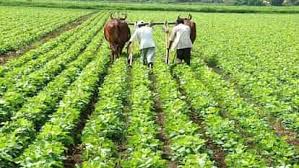
CERTIFICATE IN HORTICULTURE (1 YEAR)
CERTIFICATE IN HORTICULTURE (1 YEAR)
1. Fundamentals of Horticulture
- Definition, scope, and importance of horticulture
- Branches of horticulture (pomology, olericulture, floriculture, etc.)
- Classification of horticultural crops
- Principles of garden and orchard planning
- Tools and equipment used in horticultural operations
2. Soil and Water Management
- Types and properties of soils used in horticulture
- Soil fertility and nutrient management
- Soil preparation and land development
- Irrigation methods (drip, sprinkler, surface)
- Drainage and water conservation practices
3. Plant Propagation and Nursery Management
- Methods of plant propagation: sexual and asexual
- Nursery structures and layout planning
- Media and containers used in nurseries
- Grafting, budding, layering techniques
- Use of growth regulators in propagation
4. Cultivation of Fruit Crops
- Agro-climatic requirements for fruit crops
- Cultivation practices of major fruits (mango, banana, guava, citrus, etc.)
- Pruning, training, and canopy management
- Flowering, fruiting, and nutrient management
- Harvesting, grading, and post-harvest practices
5. Cultivation of Vegetable Crops
- Classification and importance of vegetables
- Sowing methods and crop spacing
- Cultivation techniques for key vegetables (tomato, brinjal, onion, etc.)
- Weed, nutrient, and water management
- Harvesting, storage, and market preparation
6. Cultivation of Ornamental Plants and Landscaping
- Types of ornamental plants: annuals, perennials, shrubs
- Basics of landscape design and garden types
- Lawn establishment and maintenance
- Indoor and potted plant care
- Floral arrangement and value addition
7. Plant Protection and Pest Management
- Common pests and diseases in horticultural crops
- Integrated Pest Management (IPM) principles
- Use of biopesticides and botanical extracts
- Safe use and handling of chemical pesticides
- Disease prevention and control methods
8. Post-Harvest Technology and Value Addition
- Maturity indices and harvesting techniques
- Grading, packaging, and storage of produce
- Preservation methods: drying, pickling, canning
- Cold chain and transportation logistics
- Value-added products (jams, juices, chips, etc.)
9. Organic and Sustainable Horticulture
- Principles of organic farming
- Organic inputs: compost, biofertilizers, and biopesticides
- Certification standards and labeling
- Sustainable horticultural practices
- Marketing of organic produce

